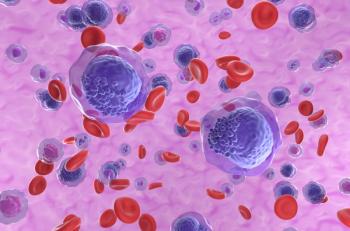
Getting There: A Behind the Scenes Look at Cancer MoonShot 2020 - ACT
The Cancer Moonshot 2020 Initiative has been a long time coming for the team working to develop the program’s infrastructure and logistics. Following years of planning the result has been an increased response in the belief that a vaccine-based immunotherapy to battle cancer will be available by 2020.
While the program has been in the news since just this January, the team behind Cancer MoonShot 2020 has been working to set up the program’s infrastructure and logistics for years. “I think people would be surprised how much background work was needed and necessary to say to the world that you would even attempt a Cancer MoonShot 2020 initiative,” said Chris Beardmore, President of
Established in 2009, TRM works as a site management organization (SMO), networking and advancing community practices, midsized hospitals and academic medical centers to streamline the conduct of medical research and get to cures faster. TRM is within the family of
Cancer MoonShot 2020 aspires to develop an effective vaccine-based immunotherapy to combat cancer by 2020. Primarily led by the private sector, the program focuses on investing in the potential of combination immunotherapy as the next standard of care by leveraging the power of genomics and proteomics.
In planning the Cancer MoonShot 2020 program, everything from IT infrastructure to data centers to the actual sites for patient care needed to be developed. Beardmore and the NantWorks team have worked to put in place what they hope is the biggest, most efficient system possible to support the Cancer MoonShot 2020 studies. Now, after years of preparation, Beardmore says that “everything is accelerating in an exponential fashion.”
“Physicians are independent-minded, brilliant people, but it is very hard to get them to work together,” said Beardmore. Following the Cancer MoonShot 2020 announcement, “we began to see a strong desire from everyone to be involved, to collaborate and accommodate, and that’s been really refreshing for me.”
“It’s turned from feeling like I’m pushing a stone up a hill to it being pulled up the hill by the community.”
Embodying this powerful collaborative energy is the QUILT Program (Quantitative Integrative Lifelong Trial), a “learning system” that assembles an incredible amount of research data from the individual Cancer MoonShot 2020 studies to drive better decision making in research and in patient care.
“We are beginning to recognize that there are ways we could think about being more efficient [without] jeopardiz[ing] any of the quality of what we do,” said Beardmore. His team strives for that kind of efficiency, and the partners they’ve chosen, including Schulman IRB, share this goal.
A “regulatory person by training,” Beardmore began his career working with institutional IRBs at the University of Maryland at Baltimore and the University of California at Los Angeles, where he worked to improve and streamline research processes and IRB systems. It’s understandable, then, that Beardmore and his team spent a lot of time and effort selecting an IRB of record for the Cancer MoonShot 2020 program.
Prior to the Cancer MoonShot 2020 program, TRM did not work with many academic medical centers, in part because of longer review timelines at some local IRBs and disparate institutional requirements. “There’s a certain amount of regulatory fundamentalism in the way local IRBs operate,” he said. “When most research was investigator initiated, being conducted within the same academic medical center [as the IRB], it made a lot of sense” to always rely on the local IRB’s review. Today, multicenter studies have become the norm, and when multiple local IRBs review the same protocol it can lead to inefficiencies and inconsistencies in participant protections.
“If every patient and every study requires a local review on top of what we do here, it is going to slow the process, potentially unnecessarily. Certain academic medical centers have been hesitant to defer to a central IRB, and [they] have to find ways to open up to it. We’ve got to solve the problem collaboratively.”
In choosing Schulman IRB as the single IRB of record, Beardmore believes “we have selected a forward-thinking partner, a partner who has distinguished itself in its IT offerings to the research community, and who really cares about local context. Running as many studies as [TRM has] run across a number of AAHRPP-certified IRBs, and knowing what I know from 15-20 years in the field, I think we made a great choice.”
The first Cancer MoonShot 2020 study is currently being reviewed by the IRB, and Beardmore expects it will be accruing patients in the near future. The program’s ultimate goal is to have 100,000 patients screened and 20,000 patients on trial over the next four years. Research professionals interested in joining the program can visit
“Academic medical centers, large community practices, ancillary service providers, pretty much anyone who could be helpful to an initiative like this…we’re welcoming all. So long as people are willing to be engaged, and to be innovative in their way of thinking about all of this, we welcome them,” Beardmore concluded.
By Stephanie Pyle, Manager, Community and Communications at Schulman IRB
Newsletter
Stay current in clinical research with Applied Clinical Trials, providing expert insights, regulatory updates, and practical strategies for successful clinical trial design and execution.






.png)



.png)



.png)
.png)
